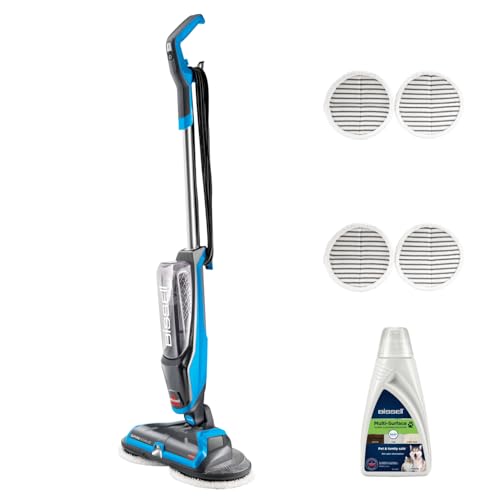




When it comes to doing laundry, one question that often arises is how many rinse cycles should you use in the washing machine. It’s a valid concern, as the number of rinse cycles can have an impact on the cleanliness of your clothes and the overall efficiency of the washing process.
Some people believe that one rinse cycle is sufficient to remove all the detergent from the clothes, while others prefer to use multiple rinse cycles to ensure the garments are thoroughly rinsed. The truth is, the number of rinse cycles you should use depends on several factors, including the type of detergent you’re using, the hardness of your water, and the level of soil on your clothes.
Experts recommend using at least one rinse cycle to remove the majority of the detergent from your clothes. This is especially important if you’re using a high-efficiency detergent that is designed to be used with a minimal amount of water. However, if you have hard water or heavily soiled clothes, you may need to use additional rinse cycles to ensure all the detergent is rinsed away.
It’s important to note that using too many rinse cycles can be wasteful, as it uses more water and energy. Additionally, excessive rinsing can cause unnecessary wear and tear on your clothes. Therefore, it’s best to strike a balance and use the appropriate number of rinse cycles based on your specific circumstances.
How Many Rinse Cycles Should You Use in the Washing Machine?
When it comes to washing your clothes in a washing machine, one important consideration is how many rinse cycles you should use. The number of rinse cycles needed can depend on a few factors, such as the cleanliness of the clothes, the type of detergent used, and any special fabric care instructions. Here are some general guidelines to help you determine how many rinse cycles you should use:
- 1. Normal conditions: For most regular loads of laundry, one rinse cycle is typically sufficient. As long as the detergent has been properly rinsed out, the clothes should come out clean and fresh.
- 2. Heavy stains or dirt: If you have clothes with heavy stains or dirt, it may be necessary to use an extra rinse cycle. This can help ensure that all the detergent and dirt particles are properly removed from the clothes.
- 3. Fragile or sensitive fabrics: Delicate fabrics such as silk or wool may require an extra rinse cycle to ensure that all traces of detergent are removed. This can help prevent any potential damage or irritation to the fabric.
- 4. Excessive sudsing: If there are excessive suds during the washing process, it may be necessary to run an extra rinse cycle to ensure that all the detergent is properly rinsed out. Excessive suds can indicate that too much detergent was used or that the detergent wasn’t properly dissolved.
Remember to always follow the instructions on the detergent packaging and any care instructions on the garment labels. These guidelines can provide a good starting point, but you may need to adjust the number of rinse cycles based on your specific circumstances. By properly rinsing your clothes, you can help ensure that they come out clean, fresh, and free from any detergent residue.
Expert Advice and Tips
Selecting the Right Rinse Cycle
When using a washing machine, it is important to choose the appropriate rinse cycle for your laundry. The number of rinse cycles you should use depends on various factors, including the type of fabric, the level of dirtiness, and any specific care instructions provided by the clothing manufacturer.
Type of Fabric: Different fabrics require different rinse cycles. Delicate fabrics such as silk or lace may require a gentle rinse cycle, while sturdy fabrics like denim may require a more vigorous rinse to remove dirt and soap residue.
Level of Dirtiness: If your laundry is particularly dirty or stained, using an extra rinse cycle can help ensure that all dirt and stains are thoroughly removed. This is especially important for items such as baby clothes or workout wear that tend to accumulate more dirt or sweat.
Preventing Soap Residue
One of the main reasons for using multiple rinse cycles is to prevent soap residue from remaining on your laundry. Soap residue can cause skin irritation, decreased absorbency in towels and linens, and can even lead to an unpleasant odor. By using the appropriate number of rinse cycles, you can ensure that all soap is thoroughly rinsed out.
Water Efficiency
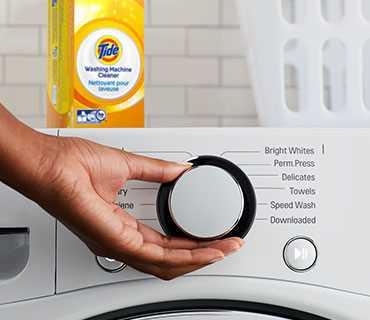
While using multiple rinse cycles can be beneficial, it is also important to consider water efficiency. Washing machines consume a significant amount of water with each cycle, so using unnecessary rinse cycles can contribute to water wastage. It is advisable to find a balance between using enough rinse cycles to ensure cleanliness and reducing water consumption.
Recommended Rinse Cycle Guidelines
To help you determine the appropriate number of rinse cycles for your laundry, here are some recommended guidelines:
- For normal loads of lightly soiled laundry, one rinse cycle is usually sufficient.
- For heavily soiled or stained laundry, consider using an extra rinse cycle.
- For delicate fabrics, such as silk or lace, use a gentle rinse cycle to avoid damage.
- If your washing machine has a “Rinse Hold” option, use it for heavily soiled items to allow for a longer rinse cycle without wasting water.
Remember to always check the care instructions provided by your clothing manufacturer, as they may have specific recommendations for rinse cycles.
Conclusion
Using the appropriate number of rinse cycles is essential for achieving clean and residue-free laundry. Consider the fabric type, level of dirtiness, and water efficiency when selecting the rinse cycle for your washing machine. Following the recommended guidelines and care instructions will help ensure that your laundry comes out fresh and clean every time.
The Importance of Rinse Cycles
Rinse cycles are an essential part of the washing machine process. They help to remove detergent residue and ensure that your clothes are clean and fresh when you take them out of the machine.
When you wash your clothes, detergent is used to remove dirt, stains, and odors. While detergent is effective at cleaning your clothes, it can leave behind a residue if not properly rinsed. This residue can make your clothes feel stiff, rough, and less comfortable to wear.
By using rinse cycles, you can ensure that all traces of detergent are removed from your clothes. This is particularly important for people with sensitive skin, as detergent residue can cause skin irritation and allergies. Rinse cycles also help to prevent the build-up of detergent residue in the machine itself, which can affect the machine’s performance over time.
Another benefit of rinse cycles is that they help to remove any remaining dirt or debris from your clothes. This is especially important for heavily soiled items or items that have been exposed to chemicals or other substances. The extra rinsing helps to ensure that your clothes are thoroughly cleaned and free from any lingering dirt or contaminants.
Rinse cycles can also help to improve the lifespan of your clothes. By removing all traces of detergent and dirt, you can prevent these substances from breaking down the fibers in your clothes over time. This can help to keep your clothes looking newer for longer and reduce the need for frequent replacement.
In summary, rinse cycles play a crucial role in the washing machine process. They help to remove detergent residue, eliminate dirt and debris, and improve the lifespan of your clothes. By using rinse cycles regularly, you can ensure that your clothes are clean, fresh, and comfortable to wear.
Why it is crucial to use multiple rinse cycles in your washing machine
Many people may not realize the importance of using multiple rinse cycles in their washing machine. However, there are several reasons why it is crucial to do so.
1. Removing detergent residue
One of the main reasons to use multiple rinse cycles is to ensure that all detergent residue is completely removed from your clothes. If you don’t rinse your clothes thoroughly, leftover detergent can build up over time and lead to skin irritation or allergic reactions.
2. Getting rid of dirt and grime
Another important reason for multiple rinse cycles is to ensure all dirt, grime, and other particles are thoroughly removed from your clothes. Washing machines can remove most of the dirt during the wash cycle, but a single rinse may not be enough to eliminate all traces of dirt and grime.
3. Increasing the lifespan of your clothes
By using multiple rinse cycles, you can help prolong the lifespan of your clothes. When detergent or dirt remains in the fabric, it can weaken the fibers over time, causing them to wear out more quickly. By thoroughly rinsing your clothes, you can remove these damaging substances and help your garments last longer.
4. Enhancing the freshness of your clothes
Using multiple rinse cycles can also help to ensure your clothes come out of the washing machine smelling fresh and clean. By removing all detergent residue and dirt, you can prevent any unpleasant odors from lingering on your clothes.
5. Preventing skin irritation
If you have sensitive skin or allergies, using multiple rinse cycles is especially crucial. Any remaining traces of detergent can irritate your skin, leading to itching, redness, or rashes. Thoroughly rinsing your clothes can help prevent these reactions and keep your skin healthy.
In conclusion, using multiple rinse cycles in your washing machine is crucial for ensuring your clothes are thoroughly cleaned, removing any leftover detergent, dirt, and grime. It can also help extend the lifespan of your garments, enhance their freshness, and prevent skin irritation. So, don’t overlook the importance of multiple rinse cycles when doing your laundry!
Determining the Number of Rinse Cycles
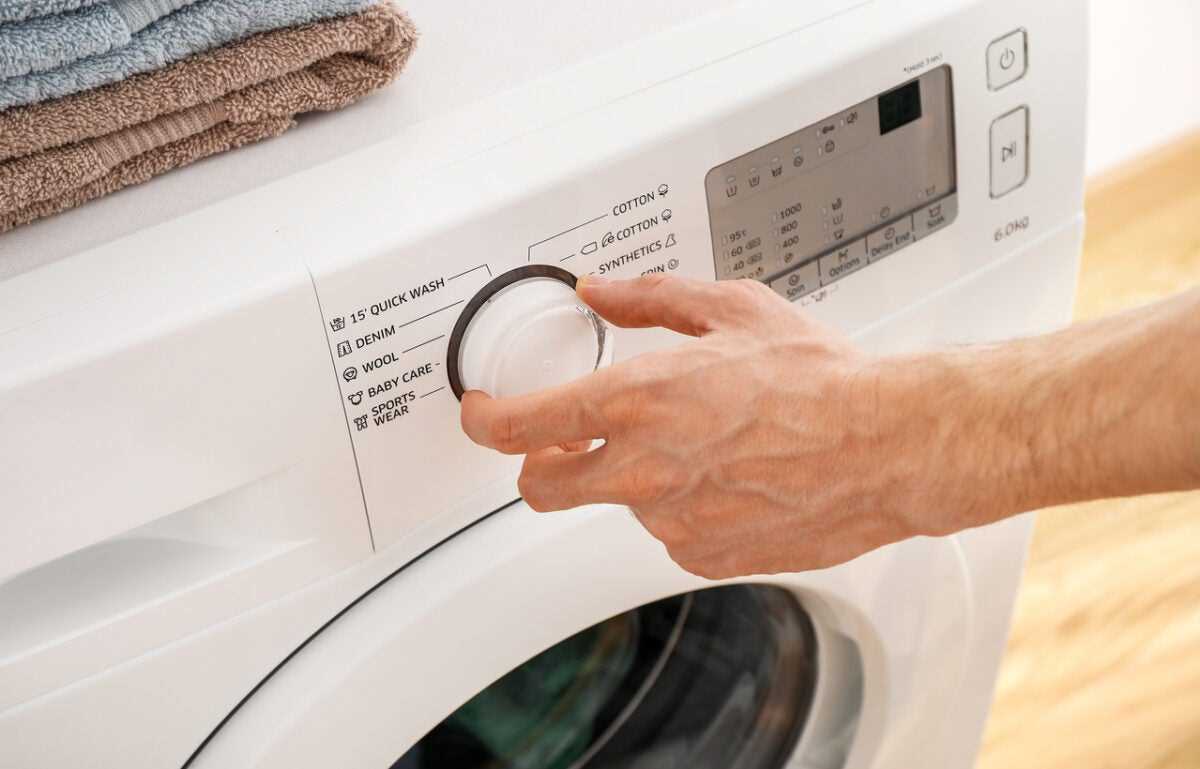
When it comes to determining the number of rinse cycles to use in your washing machine, there are a few factors to consider. These factors include the type of laundry you are washing, the level of dirtiness, and any specific requirements for the fabric or garment.
Type of Laundry
The type of laundry you are washing can affect the number of rinse cycles needed. For example, delicate fabrics that are more prone to retaining soap residue may require an additional rinse cycle to ensure all the detergent is removed. On the other hand, heavily soiled items like dirty towels or work clothes may also require an extra rinse cycle to ensure thorough cleaning.
Level of Dirtiness
The level of dirtiness also plays a role in determining the number of rinse cycles needed. If your clothes are lightly soiled or if you are washing items that have been worn for a short period of time, a single rinse cycle may be sufficient. However, for heavily soiled items or clothes that have been worn for an extended period, multiple rinse cycles may be necessary to ensure all the dirt and grime is completely removed.
Specific Fabric or Garment Requirements
Sometimes, specific fabrics or garments have special requirements that may influence the number of rinse cycles needed. For example, certain types of waterproof or water-resistant fabrics may require an additional rinse cycle to ensure all soap residue is removed and the fabric maintains its properties. Additionally, some garments or items made of delicate materials may require a gentle rinse cycle or an extra rinse to avoid damage or color fading.
Ultimately, the number of rinse cycles you should use in your washing machine depends on the specific circumstances of your laundry. It is generally recommended to start with the manufacturer’s guidelines for the fabric or garment being washed and adjust as needed based on the level of dirtiness and personal preference for cleanliness. Experimenting with different rinse cycle settings can help you find the optimal number for your laundry.
Factors to consider when deciding how many rinse cycles to use
There are several factors that you should consider when deciding how many rinse cycles to use in your washing machine. These factors can help you determine the appropriate number of rinse cycles for your specific laundry needs:
- Fabric type: Different fabrics have different levels of absorbency, so the number of rinse cycles needed may vary. For example, heavily soiled cotton fabrics may require more rinsing compared to synthetic materials.
- Level of dirtiness: If your laundry is heavily stained or soiled, it may require additional rinse cycles to ensure that all the dirt and detergent residue is removed. On the other hand, lightly soiled items may not require as many rinses.
- Detergent type and amount: Some detergents are more concentrated than others, and using too much detergent can lead to excessive suds that are difficult to rinse out. In such cases, additional rinse cycles may be necessary to remove all the detergent residue.
- Water hardness: The hardness of the water in your area can affect how well the detergent rinses out. Hard water contains minerals that can make it harder for soap to dissolve and rinse away. If you have hard water, you may need to use more rinse cycles to ensure thorough rinsing.
- Allergies or sensitivities: If you or your family members have allergies or sensitivities to detergent residues, it may be beneficial to use extra rinse cycles to ensure that all traces of detergent are removed.
It is important to note that using too many rinse cycles can waste water and energy, so it is best to find the right balance based on your specific laundry needs. Experiment with different settings and observe the results to determine the optimal number of rinse cycles for your washing machine.
Tips for Efficient Rinse Cycles
Efficient rinse cycles can help save water, energy, and time. By following these tips, you can ensure that your clothes are properly rinsed without wasting resources.
1. Use the appropriate water level
Make sure you’re using the correct water level for your load size. Using too much water unnecessarily can lead to longer rinse cycles and higher water bills.
2. Avoid overloading the washing machine
Overloading the washing machine can prevent your clothes from getting adequately rinsed. It’s best to follow the manufacturer’s guidelines on load size to ensure efficient rinsing.
3. Use the right detergent
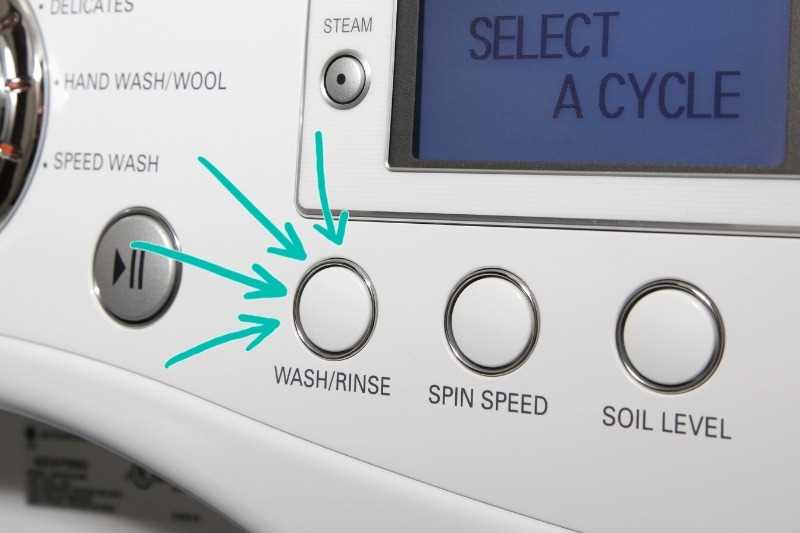
Using too much detergent can result in excessive foaming, which can lead to longer rinse cycles. Be sure to use the recommended amount of detergent for your load size and water hardness.
4. Choose the appropriate rinse cycle option
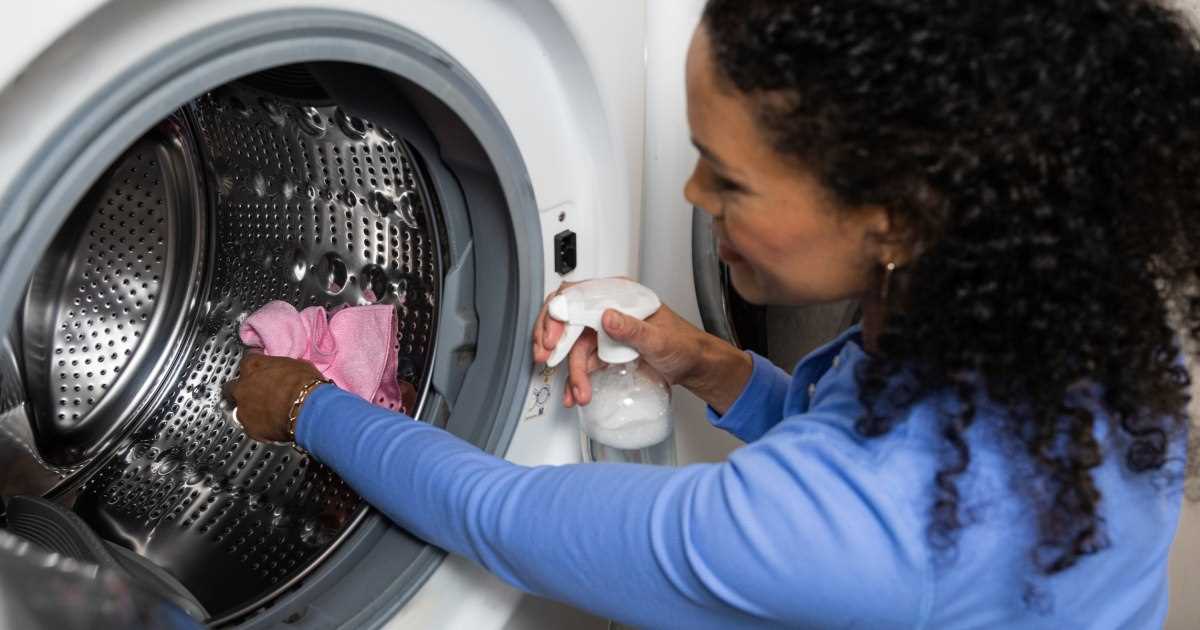
Some washing machines have different rinse cycle options, such as “Extra Rinse” or “Rinse and Spin.” These options can be useful for heavily soiled items or for people with sensitive skin, but they may add extra time to the overall wash cycle.
5. Consider using fabric softener sparingly
Fabric softener can leave residue on clothes, requiring extra rinsing to remove. If you choose to use fabric softener, use it sparingly to avoid the need for additional rinse cycles.
6. Use cold water for rinsing
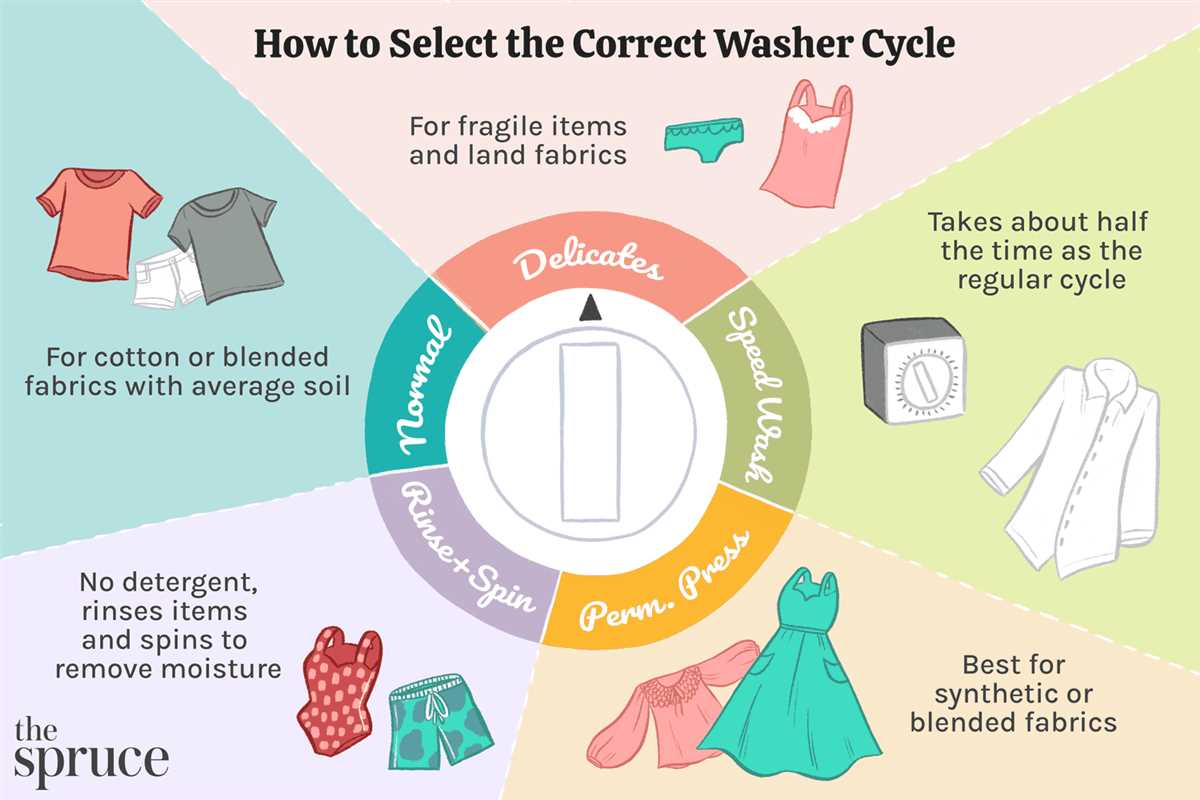
Cold water can be just as effective as hot water for rinsing clothes, and it uses less energy. Consider using cold water for your rinse cycles to save resources.
7. Opt for shorter rinse cycles when possible
If your clothes aren’t heavily soiled, you can choose a shorter rinse cycle to save time and energy. It’s important to ensure that your clothes are adequately rinsed, but using the shortest effective rinse cycle can help reduce waste.
8. Clean the washing machine regularly
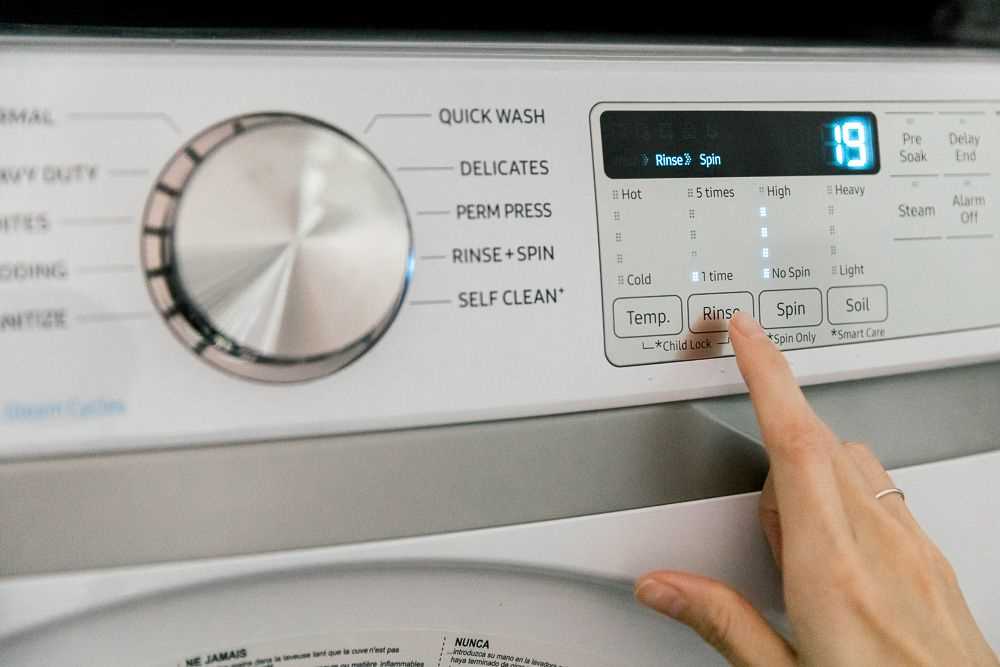
Regularly cleaning your washing machine can help ensure that it rinses efficiently. Remove any detergent or fabric softener buildup and clean the filter. A clean washing machine can help prevent the need for additional rinse cycles.
9. Consider a high-efficiency washing machine
If you’re in the market for a new washing machine, consider opting for a high-efficiency model. These machines are designed to use less water and energy, resulting in shorter rinse cycles and lower resource consumption.
By following these tips, you can make your rinse cycles more efficient, saving water, energy, and time in the process. Remember to always follow the manufacturer’s guidelines for your specific washing machine model.
FAQ
How many rinse cycles should I use in the washing machine?
Typically, one rinse cycle is sufficient to remove the detergent from your clothes. However, if you have sensitive skin or if your clothes are particularly soiled, you may want to consider using an extra rinse cycle.
Will using more rinse cycles improve the cleanliness of my clothes?
No, using more rinse cycles will not necessarily improve the cleanliness of your clothes. The cleansing power comes from the detergent, and one rinse cycle should be enough to remove it. If your clothes are not coming out clean, you may need to adjust your detergent or wash settings.
Are extra rinse cycles necessary for removing allergens?
Extra rinse cycles can be helpful for removing allergens from your clothes, especially if you have allergies or sensitivities. The additional rinsing can help to remove any residual allergens and make your clothes more hypoallergenic.
Is it better to use a prewash cycle instead of an extra rinse cycle?
Using a prewash cycle can be a good alternative to using an extra rinse cycle. The prewash cycle helps to loosen and remove any heavy stains or dirt before the main wash cycle. This can be especially beneficial for heavily soiled clothes.
Can using too many rinse cycles damage my clothes or washing machine?
Using too many rinse cycles can potentially damage your clothes and washing machine. Excessive rinsing can cause wear and tear on the fabric, and it can also put extra strain on the washing machine motor and plumbing. It’s best to follow the manufacturer’s recommendations for the number of rinse cycles.
How many rinse cycles should I use in the washing machine?
The number of rinse cycles you should use in the washing machine depends on several factors such as the level of dirtiness of the clothes and your personal preference. As a general rule, one rinse cycle is usually enough, but if your clothes are heavily soiled or if you have sensitive skin, you may want to consider using an extra rinse cycle.







